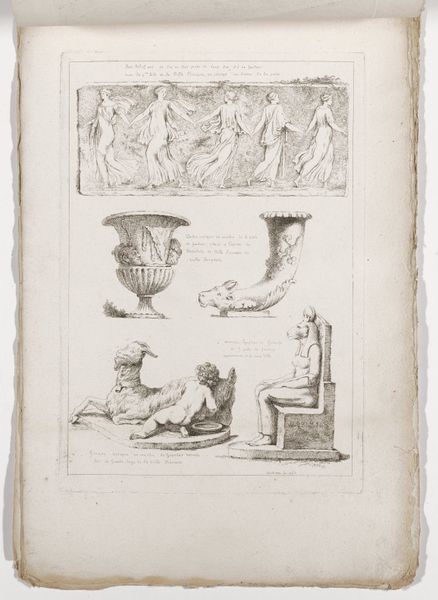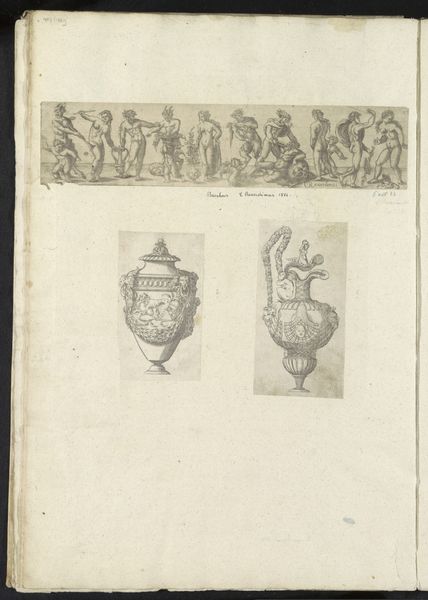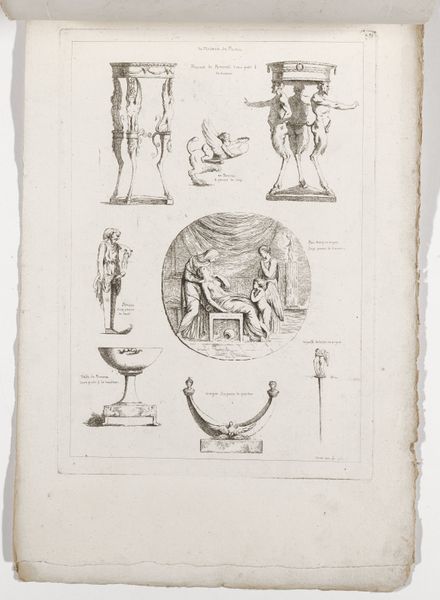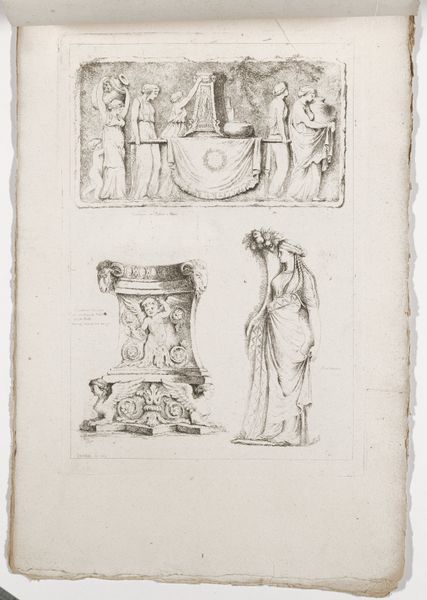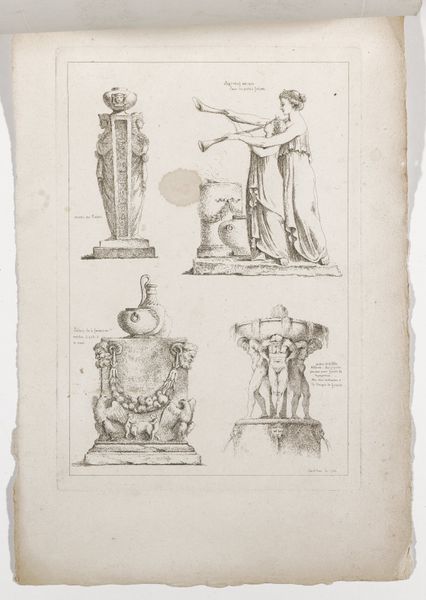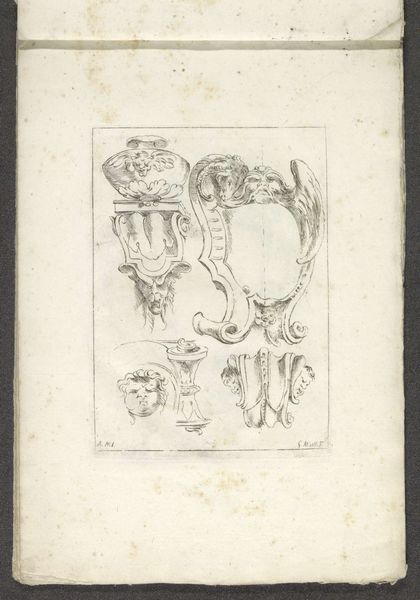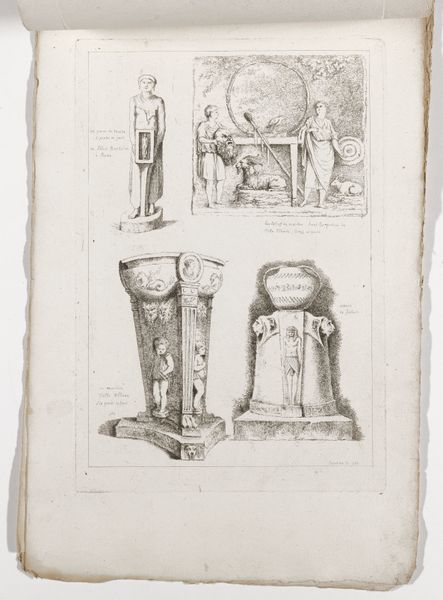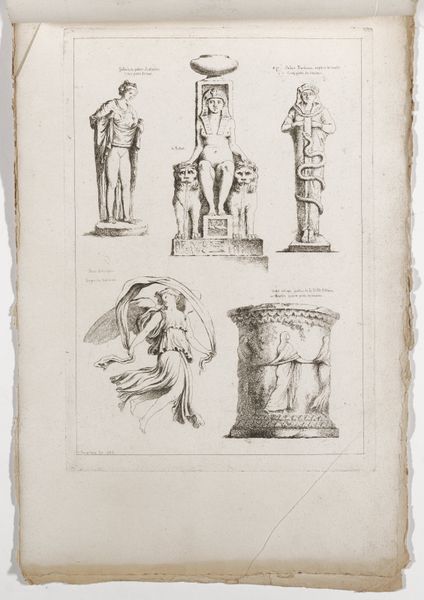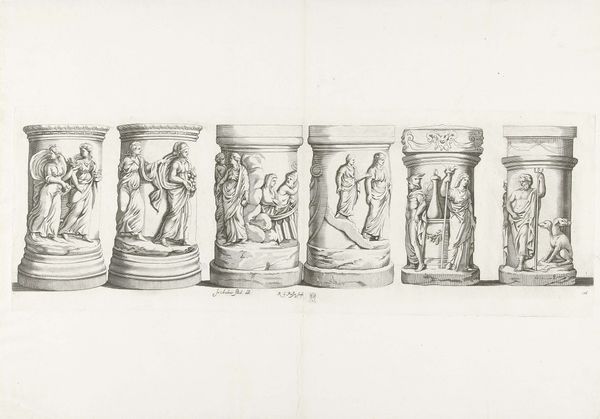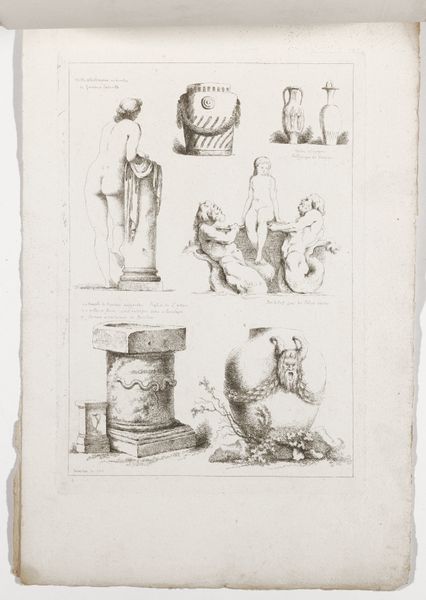
drawing, print, etching, engraving
#
drawing
# print
#
etching
#
classical-realism
#
geometric
#
ancient-mediterranean
#
history-painting
#
engraving
Dimensions: 12 13/16 × 8 7/8 in. (32.54 × 22.54 cm) (plate)16 5/8 × 11 1/4 in. (42.23 × 28.58 cm) (sheet)
Copyright: Public Domain
Editor: Here we have "Fascicule III," an etching and engraving from 1763 by Jean Claude Richard, Abbé de Saint-Non, currently held at the Minneapolis Institute of Art. It's an interesting composite of ancient forms, from vases to friezes. What catches your eye when you look at the visual language of this work? Curator: The print immediately draws attention through its diverse range of engraved objects and classical forms. Let’s look closely at the organization; consider how each object relates formally through line, shape, and value, creating an overall structural coherence despite their individual differences. For instance, how does the oval composition featuring three female figures echo the curvature present in the vases? Editor: I see that now! The repetition of those curved lines definitely creates a visual link. So you're focusing on the relationships between the shapes, rather than the subject matter? Curator: Precisely. Note the density of marks creating darker values in some areas and sparse lines in others; these varying tonal fields impact spatial perception. How does this strategic placement of light and dark affect the perceived depth and weight of each object? Editor: The darker areas definitely seem to bring certain forms forward. The urn at the bottom left has so much more detail than, say, the plinth at the lower right, which flattens it. Curator: Yes, and this visual distinction leads to a hierarchical organization on the page, wouldn't you agree? We are directed to analyze the complex structures, textures, and spatial relationships crafted solely through the artistic language of line and form, divorced from historical or symbolic considerations. The interplay, rhythm, and arrangement offer a robust experience in aesthetic observation. Editor: That’s a helpful reminder to consider the impact of something simple like line weight. Thank you for shifting my perspective.
Comments
minneapolisinstituteofart about 2 years ago
⋮
The Jean-Baptiste Claude Richard (also known by his title abbé Saint-Non) embodied the important role of the amateur, an patron and connoisseur of the arts as well as a practitioner in 18th-century France. He was a skilled networker, a curious, innovative printmaker, and he supported his artist friends in their projects and travels. Saint-Non executed this suite of prints in Paris in 1763, representing antique fragments and reliefs he saw during his travels in Italy from 1759 to 1761. Most of the monuments are identified in the inscriptions by their locations in Rome. The works reflect French artists’ fascination with antiquity at the time, and the way in which these sources were transmitted to a larger public through the circulation of prints. Remarkably the suite of etchings remain as originally issued, in three groups of six deckle-edged sheets stitched together simply along the top edge.
Join the conversation
Join millions of artists and users on Artera today and experience the ultimate creative platform.
